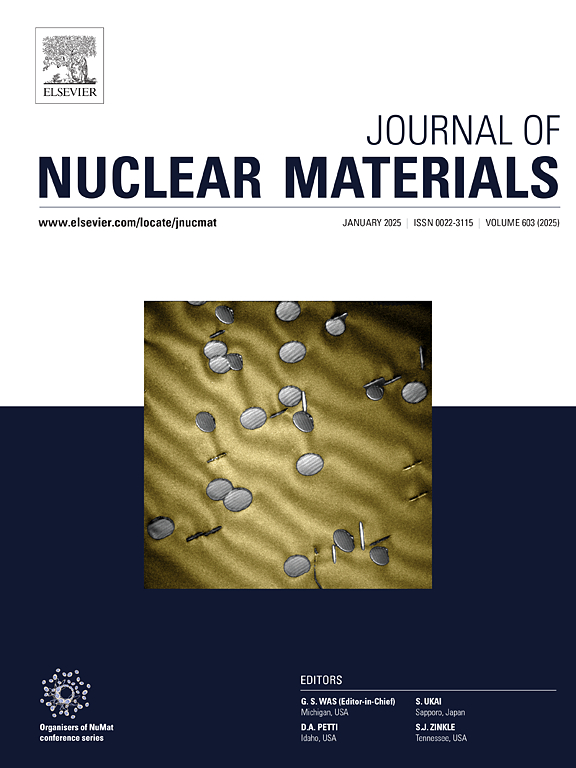Investigation on the SCC susceptibility of a heat-optimized l-PBF 304L stainless steel in simulated primary water
IF 2.8
2区 工程技术
Q3 MATERIALS SCIENCE, MULTIDISCIPLINARY
引用次数: 0
Abstract
This study examines the stress corrosion cracking (SCC) behavior of laser powder bed fusion (L-PBF) 304 L stainless steel after solution annealing (SA) in high-temperature water environments. SCC susceptibility was evaluated under both hydrogenated and oxygenated water environments at 325 °C and 15.5 MPa. The results showed that heat-treated l-PBF 304 L exhibited fully recrystallized equiaxed grains, characterized with high-density annealing twins and a uniform microstructure. Stress-strain tests revealed a marked reduction in elongation and mixed intergranular (IG) and transgranular (TG) cracking, indicating significant SCC susceptibility in both environments. Notably, hydrogenated water conditions led to a higher proportion of TG cracking, suggesting enhanced hydrogen embrittlement (HE), while oxygenated conditions favored IG cracking. Cross-sectional analysis highlighted localized strain concentration at crack tips, and precipitates were found to play a critical role in the initiation and propagation of cracks. These findings provide crucial insights into the relationship between microstructure, environmental factors, and SCC behavior in l-PBF 304 L stainless steel.
求助全文
约1分钟内获得全文
求助全文
来源期刊

Journal of Nuclear Materials
工程技术-材料科学:综合
CiteScore
5.70
自引率
25.80%
发文量
601
审稿时长
63 days
期刊介绍:
The Journal of Nuclear Materials publishes high quality papers in materials research for nuclear applications, primarily fission reactors, fusion reactors, and similar environments including radiation areas of charged particle accelerators. Both original research and critical review papers covering experimental, theoretical, and computational aspects of either fundamental or applied nature are welcome.
The breadth of the field is such that a wide range of processes and properties in the field of materials science and engineering is of interest to the readership, spanning atom-scale processes, microstructures, thermodynamics, mechanical properties, physical properties, and corrosion, for example.
Topics covered by JNM
Fission reactor materials, including fuels, cladding, core structures, pressure vessels, coolant interactions with materials, moderator and control components, fission product behavior.
Materials aspects of the entire fuel cycle.
Materials aspects of the actinides and their compounds.
Performance of nuclear waste materials; materials aspects of the immobilization of wastes.
Fusion reactor materials, including first walls, blankets, insulators and magnets.
Neutron and charged particle radiation effects in materials, including defects, transmutations, microstructures, phase changes and macroscopic properties.
Interaction of plasmas, ion beams, electron beams and electromagnetic radiation with materials relevant to nuclear systems.
 求助内容:
求助内容: 应助结果提醒方式:
应助结果提醒方式:


